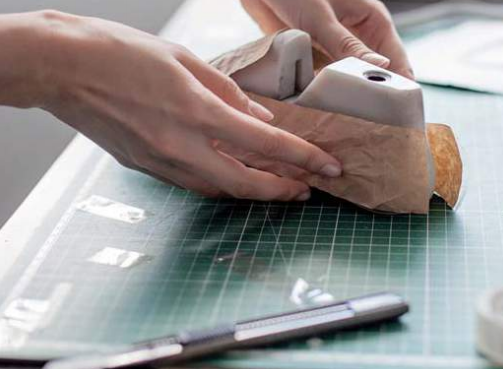The Indian footwear retail market, rooted in traditional craftsmanship, is rapidly evolving with globalisation and changing consumer preferences. While traditional brick-and-mortar stores still thrive, the emergence of e-commerce platforms has democratised access to footwear, particularly in smaller cities. The e-commerce platforms have been a game-changer for the Indian footwear retail market, offering consumers access to a vast array of products from both domestic and international brands. This online retail boom has democratised access to footwear, particularly in Tier 2 and 3 cities where physical retail infrastructure may be limited. Consumers now have the convenience of browsing and purchasing footwear from the comfort of their homes, with options for doorstep delivery and hassle-free returns.
Moreover, the rise of digital platforms has facilitated the dissemination of fashion trends and style inspiration, empowering consumers to make more informed purchasing decisions. Social media influencers and online fashion bloggers play a significant role in shaping consumer preferences and driving demand for trendy footwear styles and innovative designs. Digitalisation has led to personalised shopping experiences through technologies like 3D printing, AR, VR, and AI.
However, challenges such as counterfeit products and the digital divide persist. Brands are responding with innovative solutions like authentication technologies and initiatives to improve digital access in rural areas. Despite these challenges, the market presents opportunities for brands to capitalise on emerging trends and cater to diverse consumer preferences. By embracing innovation and addressing key challenges, the Indian footwear retail landscape is poised for a vibrant transformation that meets the needs of a diverse consumer base while leveraging the potential of digital platforms.
Footwear Design Strategies for Indian Brands & Retailers
In the dynamic Indian footwear market, success hinges on understanding the diverse consumer base and crafting designs that meet their evolving needs. Brands like Bata India strike a balance between affordability and quality, while Liberty and Khadim prioritize comfort in their offerings. Incorporating ethnic motifs and vibrant colours, Bata India and Metro Shoes blend tradition with modernity effectively.
Sustainability is gaining importance, with Adidas India leading the charge with eco-friendly initiatives like the ‘Adidas Parley’ collection. An Omnichannel approach is essential, leveraging e-commerce and data-driven design to anticipate consumer preferences. Effective marketing, highlighting design stories and technological advancements, helps brands like Nike and Under Armour stand out.
 These brands are investing in localized initiatives to cater to Indian consumers, ensuring a strong foothold in the market. In this ever-evolving landscape, success lies in embracing innovation, understanding consumer needs, and employing effective retail strategies. For those who navigate these challenges adeptly, the Indian footwear market offers limitless opportunities for growth and expansion.
These brands are investing in localized initiatives to cater to Indian consumers, ensuring a strong foothold in the market. In this ever-evolving landscape, success lies in embracing innovation, understanding consumer needs, and employing effective retail strategies. For those who navigate these challenges adeptly, the Indian footwear market offers limitless opportunities for growth and expansion.
BIS & its Effect on Footwear Retail in India: The Pros & Cons
The Bureau of Indian Standards (BIS) plays a vital role in ensuring the quality and safety of products sold in India. Recently, the government has been expanding the scope of mandatory BIS certification for various products, including footwear aiming to enhance consumer protection and promote domestic manufacturing. This move reflects the increasing consumer awareness and growing concerns about the quality and safety of products, particularly in light of substandard imports that have flooded the market. BIS certification is a comprehensive process that involves rigorous testing of various aspects of a product, including the materials used, construction standards, performance metrics, and labeling requirements. For footwear, this means evaluating everything from the durability and comfort of the materials to the safety and reliability of the final product. The certification process ensures that products meet established national standards, which are designed to protect consumer interests and foster a level of trust and transparency in the marketplace.
For consumers, BIS certification serves as a guarantee of quality and safety, providing peace of mind and confidence in their purchases. This trust is crucial in a market where substandard and counterfeit products can pose significant health and safety risks. By ensuring that products meet stringent quality standards, BIS certification helps create a more reliable and trustworthy retail environment. The benefits of BIS certification can be substantial and significantly enhance a brand’s value and image.
Products that carry the BIS mark are perceived as higher quality and safer, which can differentiate them in a competitive market. This can lead to increased customer loyalty and higher sales volumes. Moreover, the push for BIS certification aligns with broader national goals of promoting domestic manufacturing. By ensuring that domestically produced footwear meets high standards, the initiative supports the growth of local industries and reduces dependence on imports. This not only strengthens the economy but also encourages innovation as manufacturers strive to meet and exceed these standards.
Ultimately, while the transition to mandatory BIS certification may present short-term challenges, it offers significant opportunities for growth and improvement in the footwear industry. By prioritizing quality, safety, and consumer satisfaction, the industry can look forward to a future characterized by enhanced brand value, increased domestic manufacturing, and a more transparent and reliable marketplace.
The Rise of FDDI as India’s Premier Footwear Design & Development Institute
The Footwear Design & Development Institute (FDDI), established in 1986 by the Ministry of Commerce and Industry, Government of India has become a cornerstone in India’s footwear industry landscape, committed to fostering design innovation and technical excellence. Continually evolving to meet industry demands, FDDI houses state-of-the-art Centre of Excellence (CoEs) and labs that facilitate cutting-edge research, development, and skill enhancement. The newly integrated Virtual Modelling Lab, equipped with advanced 3D scanners and 3D printers, revolutionizes the design process, allowing students to visualise and prototype footwear designs with unprecedented precision and efficiency, enhancing creativity and preparing them for the digital transformation sweeping through the industry.
 Furthermore, the Knitting Lab embodies FDDI’s commitment to sustainability and innovation, embracing non-leather materials and employing advanced knitting technologies for eco-friendly alternatives and textile design mastery.
Furthermore, the Knitting Lab embodies FDDI’s commitment to sustainability and innovation, embracing non-leather materials and employing advanced knitting technologies for eco-friendly alternatives and textile design mastery.
The Bio-Mechanics Lab serves as a hub for biomechanical research, employing cutting-edge technologies such as 3D foot scanners to analyse gait patterns and optimise footwear design for comfort and performance.
These facilities, combined with existing production-related machines like laser cutting and fusing machines, offer students a comprehensive learning experience spanning from concept ideation to manufacturing. FDDI’s labs serve as catalysts for industry-relevant research, skill development, and innovation, ensuring graduates are equipped with the expertise and adaptability to thrive in a dynamic market.



